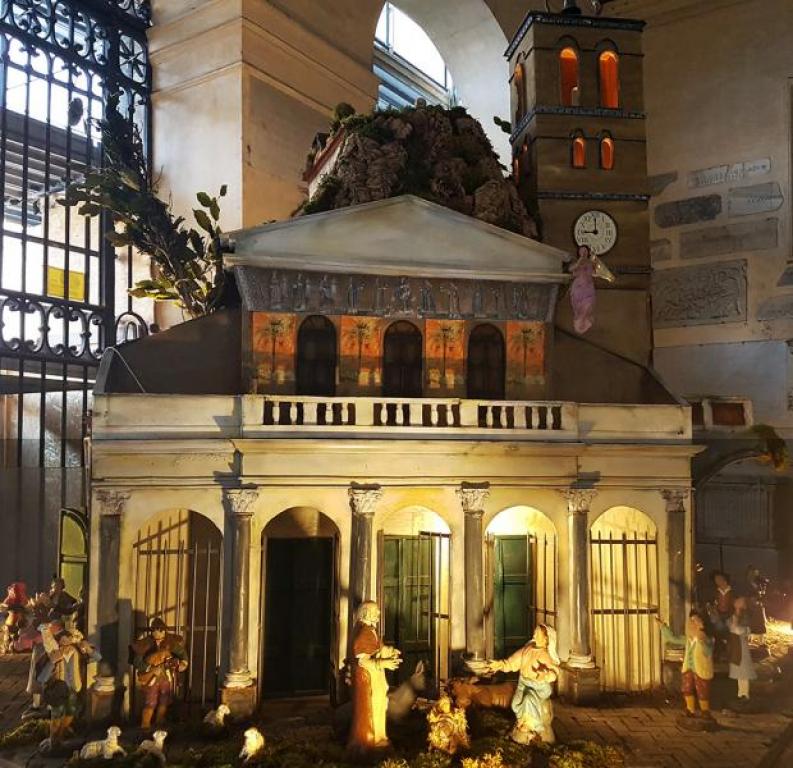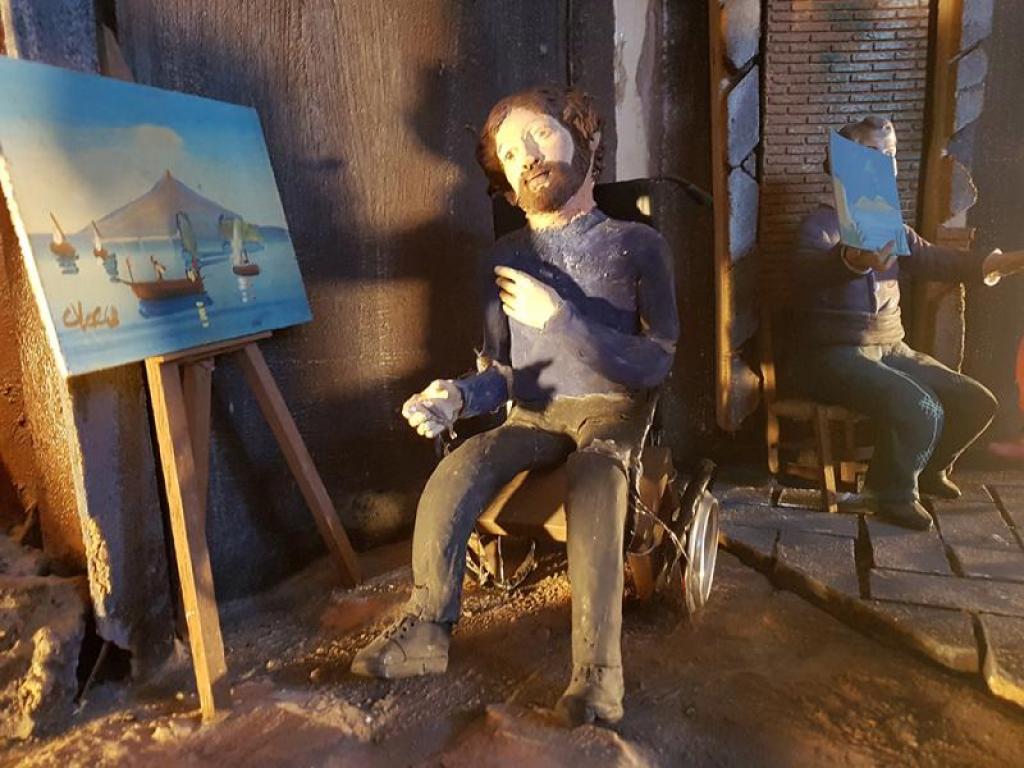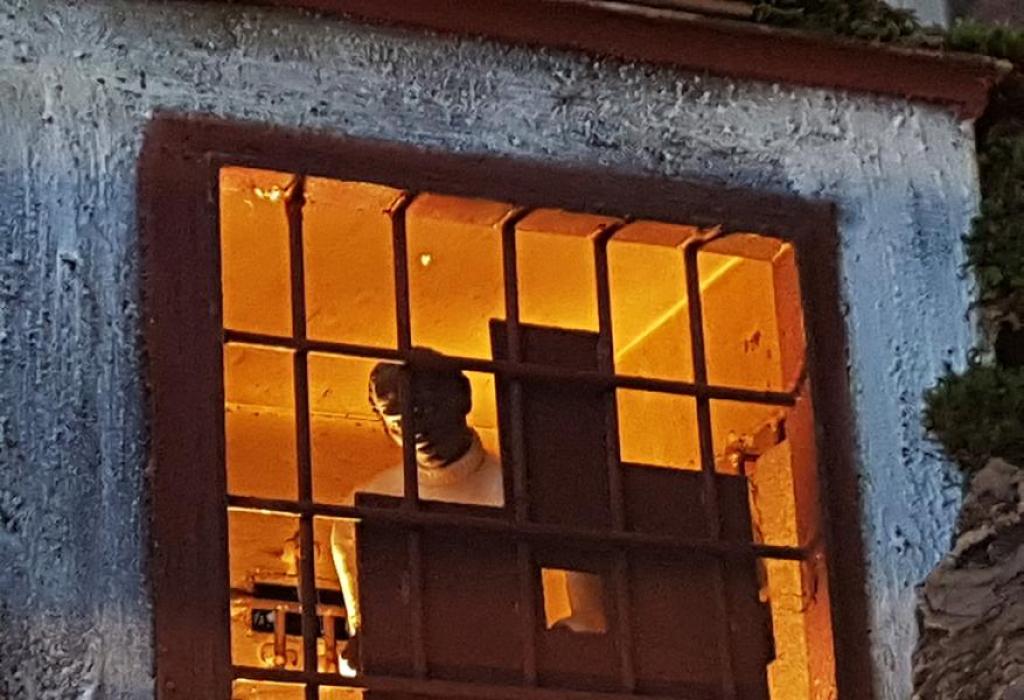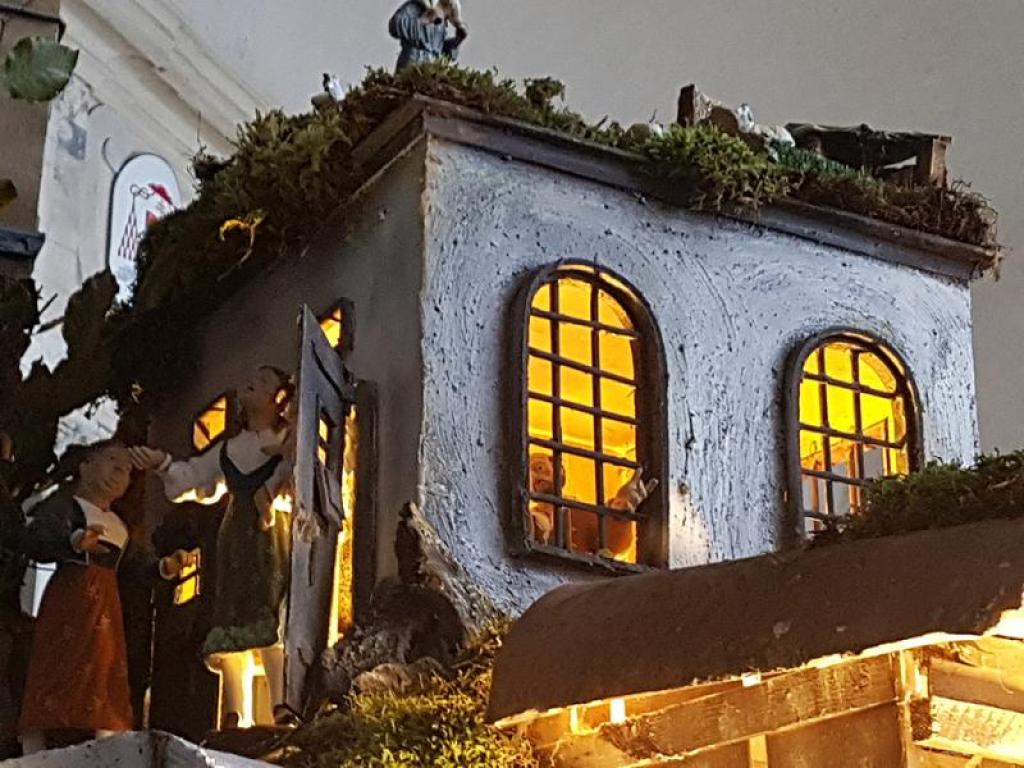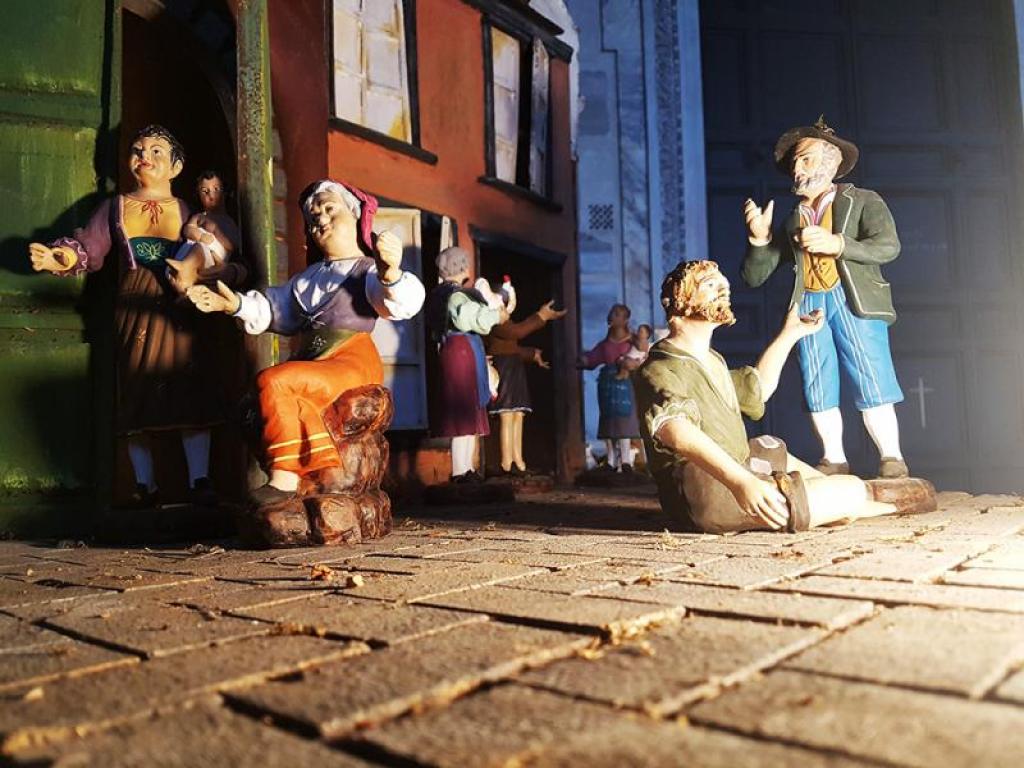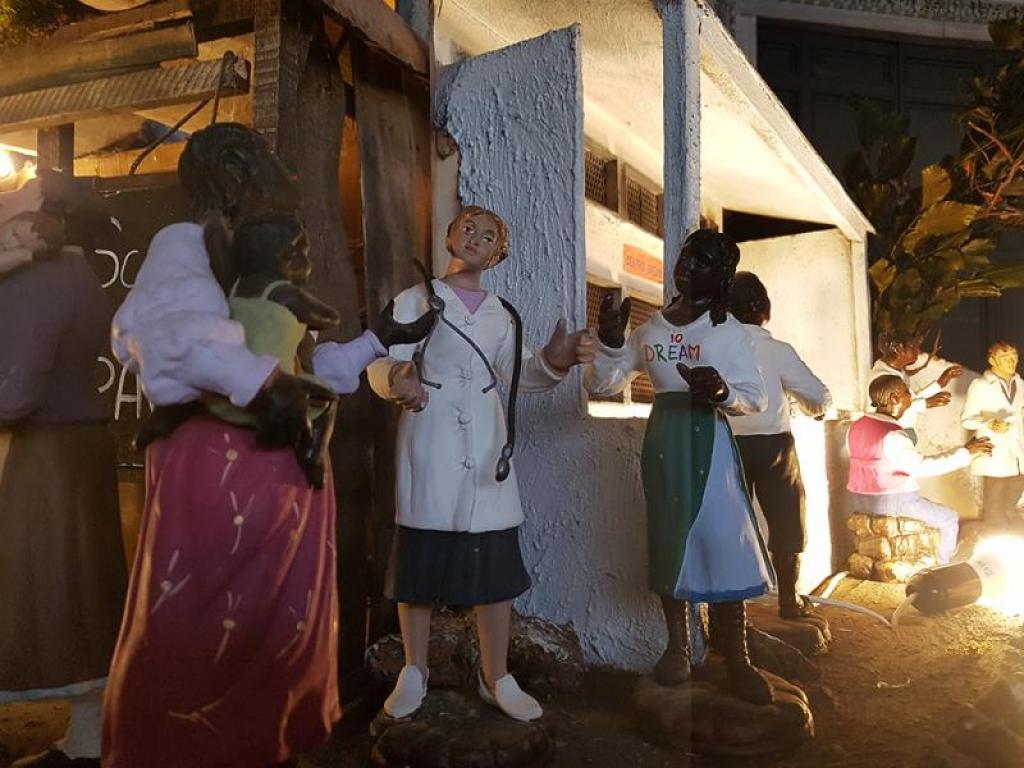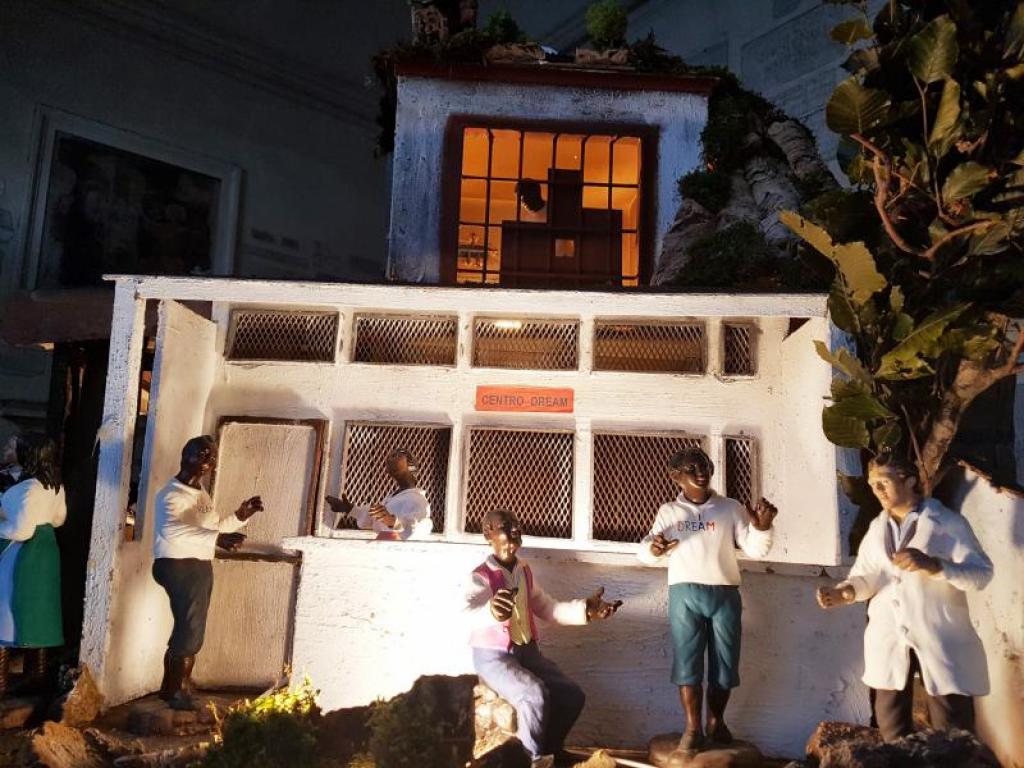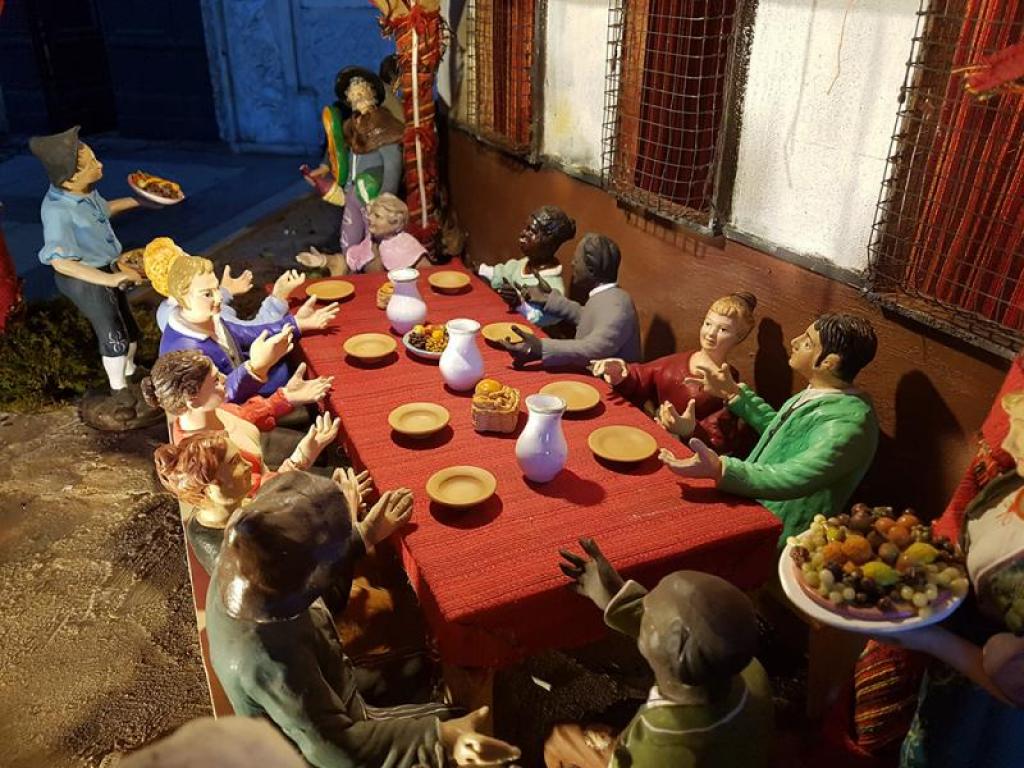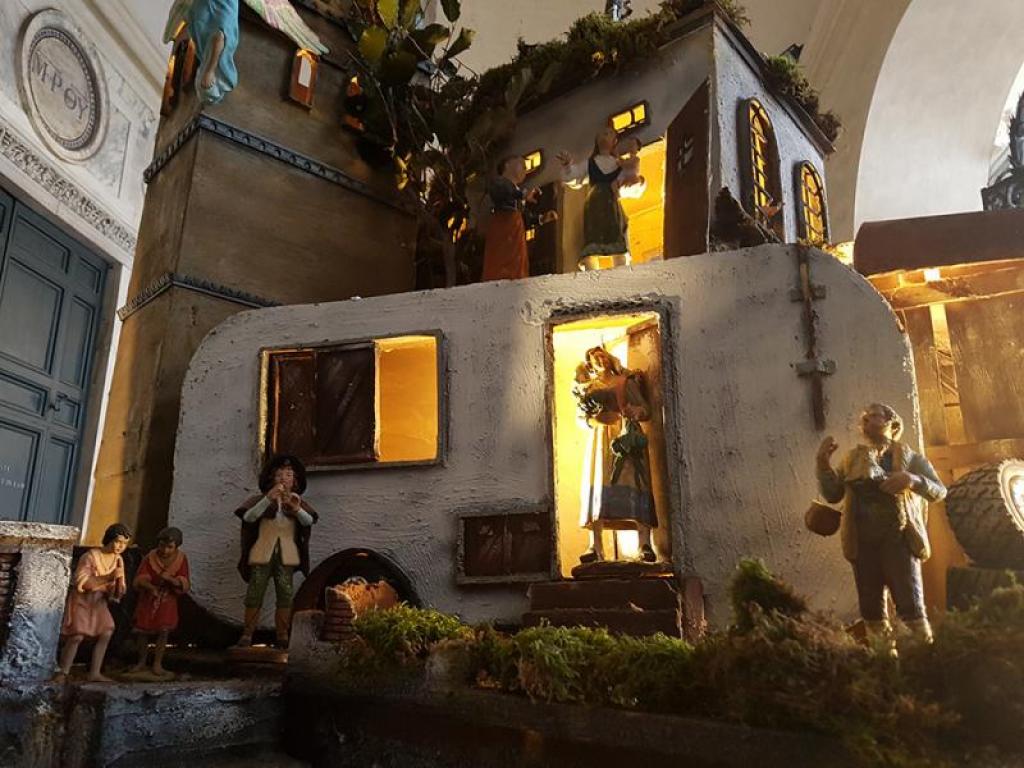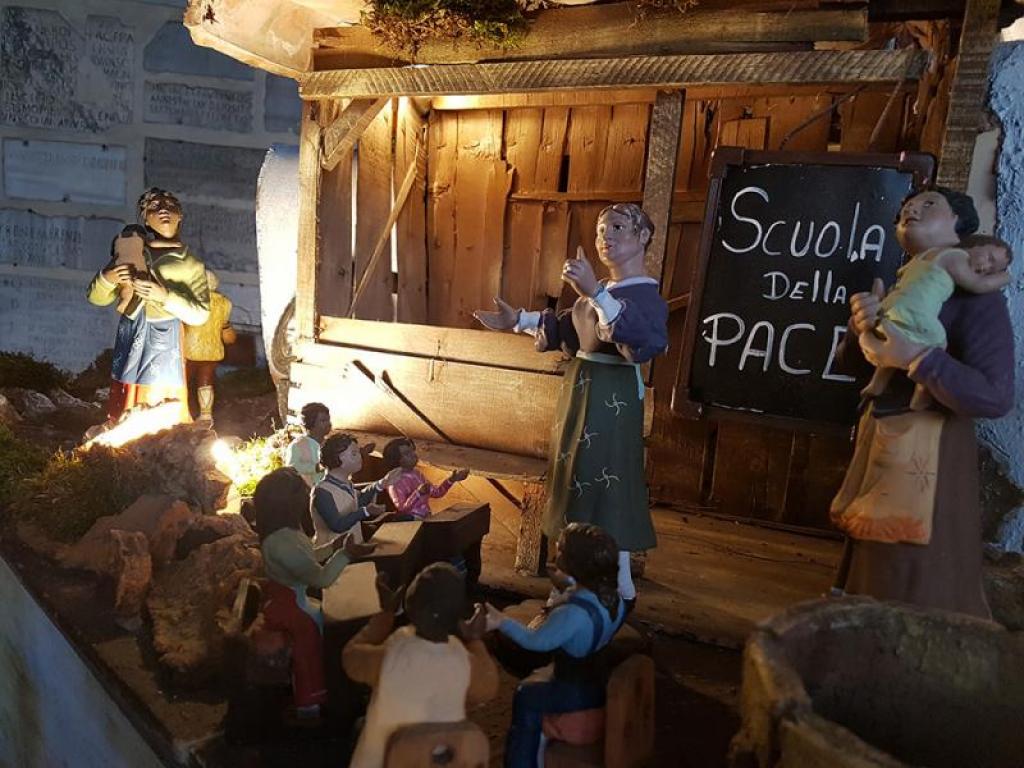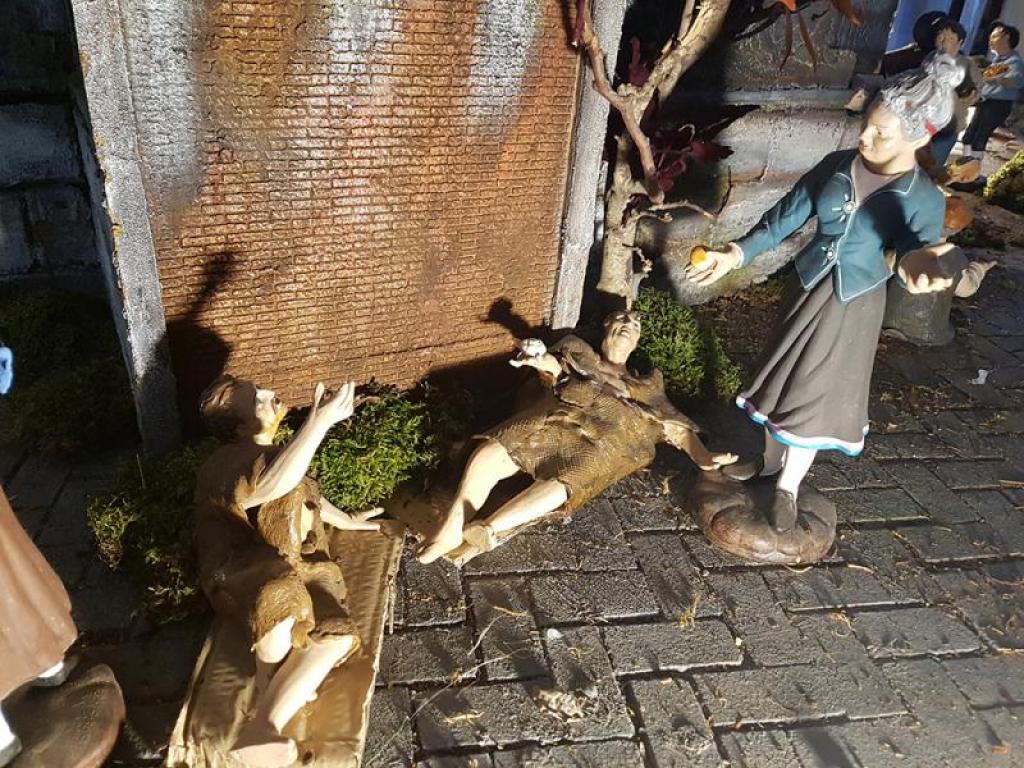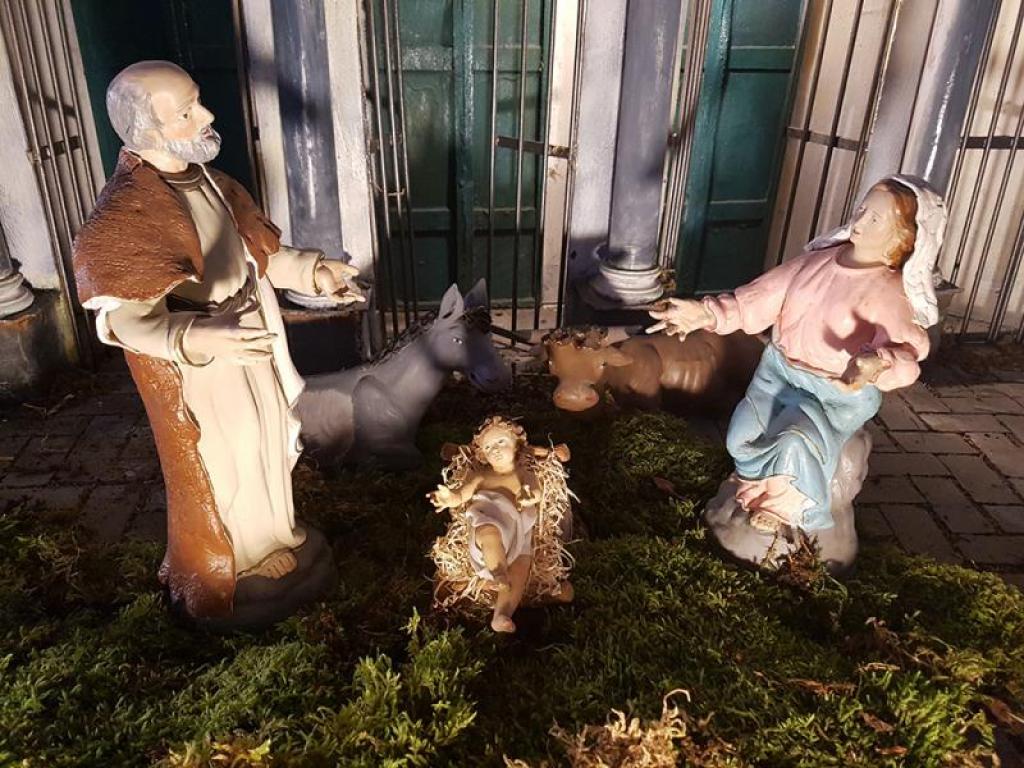In the nativity scene of the Basilica of Santa Maria in Trastevere everyone has a place in the joyous announcement of the birth of Jesus, who is born poor. The statuettes represent the people with whom the Community of Sant'Egidio shares Christmas and every day of the year, in the streets and houses, in the peripheries of the world. It is a world full of details and expectations: a prisoner sees the scene from his cell, an artist paints a landscape from a wheelchair, a homeless person receives the visit of many friends.
The letter Admirabile Signum of Pope Francis on the meaning and value of the nativity scene explains how this tradition represents a "revolution of tenderness" that calls everyone to share and not to exclude.
From the apostolic letter Admirabile Signum
6. It is customary to add many symbolic figures to our nativity scenes. First, there are the beggars and the others who know only the wealth of the heart. They too have every right to draw near to the Infant Jesus; no one can evict them or send them away from a crib so makeshift that the poor seem entirely at home. Indeed, the poor are a privileged part of this mystery; often they are the first to recognize God’s presence in our midst.
The presence of the poor and the lowly in the nativity scene remind us that God became man for the sake of those who feel most in need of his love and who ask him to draw near to them. Jesus, “gentle and humble in heart” (Mt 11:29), was born in poverty and led a simple life in order to teach us to recognize what is essential and to act accordingly. The nativity scene clearly teaches that we cannot let ourselves be fooled by wealth and fleeting promises of happiness. We see Herod’s palace in the background, closed and deaf to the tidings of joy. By being born in a manger, God himself launches the only true revolution that can give hope and dignity to the disinherited and the outcast: the revolution of love, the revolution of tenderness. From the manger, Jesus proclaims, in a meek yet powerful way, the need for sharing with the poor as the path to a more human and fraternal world in which no one is excluded or marginalized.
Children – but adults too! – often love to add to the nativity scene other figures that have no apparent connection with the Gospel accounts. Yet, each in its own way, these fanciful additions show that in the new world inaugurated by Jesus there is room for whatever is truly human and for all God’s creatures. From the shepherd to the blacksmith, from the baker to the musicians, from the women carrying jugs of water to the children at play: all this speaks of the everyday holiness, the joy of doing ordinary things in an extraordinary way, born whenever Jesus shares his divine life with us.














